Demand for primary school places is falling for two key reasons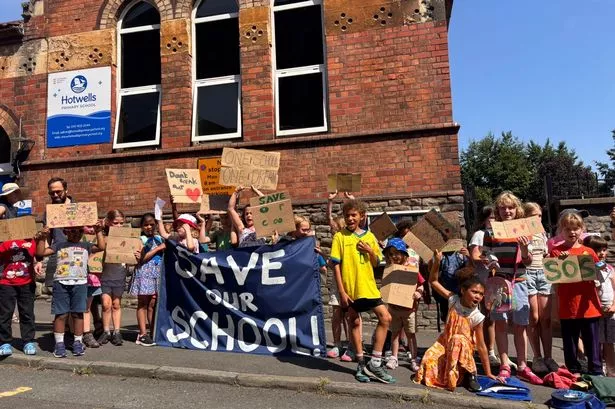 A protest outside Hotwells Primary School on Monday, June 23, 2025, against its closure and takeover by Cathedral Primary School(Image: National Secular Society)
A protest outside Hotwells Primary School on Monday, June 23, 2025, against its closure and takeover by Cathedral Primary School(Image: National Secular Society)
Education chiefs in Bristol have pledged to avoid more primary school closures and ask larger schools to reduce intake instead. But they warn that some closures may be ‘unavoidable’ as they grapple with the twin problem of Bristol’s falling birth rate and an exodus of families with young children out of the city to find cheaper housing.
Bristol City Council is dealing with a massive surplus of school places – primary schools that are set up to welcome two, three and sometimes even four classes of new reception year children each September, only to find numbers are down and classrooms are half full or sometimes completely empty. Bristol Live revealed earlier this month that this September’s intake of four-year-olds to the city’s state-funded primary schools was nearly 1,000 children short of the capacity. Now, Bristol Live can reveal which areas are mostly likely to see cuts, on an area-by-area basis.
There will be an estimated 916 empty chairs in reception classes across the city this September, following on from around 950 last September, even despite some primary schools cutting the number of reception classes they intend to have this year. Now, the council has published its draft School Organisation Strategy, which outlines to schools, parents and councillors where the issue is most distinct, their predictions for numbers up to the year 2030, and what the strategy is to cut the number of classes while trying to avoid closing schools.
The strategy also takes into account new housing being built in each area, with a calculation made about how many primary school aged children will move to the area because of those developments.
But despite Bristol seeing a housing development boom, the education chiefs point out that even though hundreds or even thousands of new homes are being built, in some areas almost all of them are small flats and won’t produce extra children to boost numbers. The formula council chiefs are working on is that each four new houses built in an area produce one primary school-aged child, but each ten flats built boosts the school roll by one child.
To tackle the issue of the impact of the decrease in the number of four-year-olds starting school in the next few years, Bristol City Council said it was looking at the issue on an area-by-area basis. It has grouped together the 34 different council wards into 13 community areas, and each has between half a dozen and a dozen primary schools.
READ MORE: Bristol schools crisis as 1,000 Reception places empty for SeptemberREAD MORE: Primary schools across Bristol in ‘grave danger’ as new council report reveals many ‘could close’
Some areas are affected more than others, with the council’s education chiefs admitting that in some places, as many as three or four classes will have to be cut each year – the equivalent of several primary schools.
But the council said its strategy was to only close smaller schools as a last resort, with a preference to cut classes in larger schools instead. Primary schools are recorded by their ‘Pupil Admission Number’ (PAN) – the number of four-year-old starters they can welcome each September – and therefore the number of Reception classes they have – which then continues up the years to Year 6.
A ‘one-form-entry’ school will have up to 30 four-year-olds joining each September, and a maximum number of pupils of 210 in total. A two-form-entry school has 60 new starters each September and can have up to 420 pupils. Some primary schools in Bristol are three or even four-form-entry schools – the biggest has more than 800 pupils.
The city council is limited in what it can do in organising a co-ordinated and agreed strategy, mainly because most of the primary schools in Bristol are academies run by multi-academy trusts, and therefore outside the control of the local education authority.
Cutting a reception class from a one-form-entry school is effectively closing it, which council education chiefs said they would rather not see happen. Instead, they will urge larger schools to reduce the number of reception classes they have – even if they are fully subscribed.
The council strategy said there are 33 schools which are one-form-entry, ‘leaving no room for further PAN reductions in these schools’. “The Local Authority has a statutory duty to ensure sufficient school places but faces limitations in influencing admissions decisions for schools outside of its direct control,” they said.
READ MORE: Bristol primary school set to close as it merges with sister siteREAD MORE: Hundreds of parents oppose ‘severely negative’ Hotwells Primary School merger
“Current birth rate projections indicate that the next five years will continue to see a reduction in the number of reception year children requiring school places. This has left some smaller schools vulnerable,” they added.
“Schools with intakes of 30 or 60 reception year pupils face the possibility of becoming economically unviable. School closures must be a last resort, but in some cases this decision will be unavoidable. For communities, the closure of a local school and loss of these facilities can have a long-lasting negative impact. Children may have to travel further from home, impacting on their sense of belonging to their local community and wellbeing,” they said.
The strategy has already been criticised by local councillors in South Bristol, who said they believed the council was angling to close at least two schools in the Hengrove and Whitchurch area of the city.
Some areas of Bristol will be largely unaffected by the falling numbers of schoolchildren, but others will have to see several schools get smaller.
Ashley and Lawrence Hill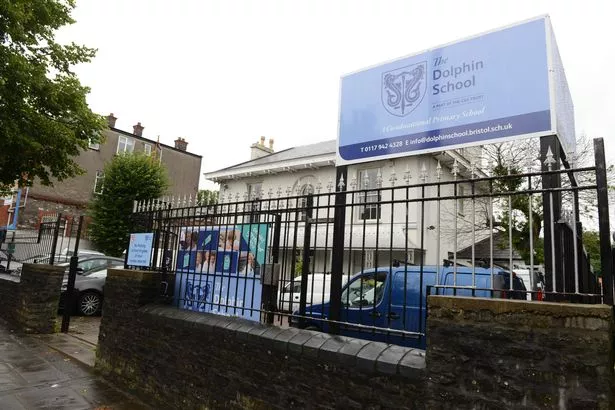 The Dolphin School is earmarked for closure in 2026
The Dolphin School is earmarked for closure in 2026
There are 11 schools in this area, which stretches from St Pauls across the M32 to Lawrence Hill and Barton Hill. Six of the schools are 1FE (one-form-entry), and the other five are 2FE.
It has already been announced that one of the primary schools – The Dolphin School – will close soon and pupils will transfer to nearby Fairlawn Primary, which is run by the same E-ACT academy trust. Fairlawn will increase from a 1FE school to a 2FE school as a result.
The city council strategy states that it is projected that 1,093 new homes will be built in this area between 2023 and 2028, but a whopping 96 per cent of them will be flats, which will add a grand total of three extra four-year-olds each year.
The strategy said falling rolls will mean that across the area, there will be 105 surplus places across the 11 schools by 2030, and the aim is to reduce the number of reception classes by three – at four of the larger schools, rather than close any more one-form entry schools.
Eastville Frome Vale and Hillfields Joe Wicks visits May Park Primary School in Eastville in 2019(Image: Dan Regan/BristolLive)
Joe Wicks visits May Park Primary School in Eastville in 2019(Image: Dan Regan/BristolLive)
There are eight primary schools in this corner of Bristol, which stretches from the M32 across to Fishponds and Hillfields. Two of them are large three-form-entry schools, four are two-form-entry and two are smaller, one-form-entry schools. There will be a surplus of almost 100 places by 2030, the strategy states, so three of the larger schools will be asked to lose a Reception class.
St George and Easton
There are six primary schools in this area including one, Air Balloon Primary, which is one of the biggest schools in Bristol with a four-form-entry. Only one school is small – St Patrick’s Catholic Primary – and the surplus projected to 2030 is not huge. The council strategy states that one of the primary schools will be asked to cut one of its reception classes.
Avonmouth and Lawrence Weston
One of Bristol’s biggest areas, there are seven primary schools from Lawrence Weston to Shirehampton and Avonmouth. Five of them are smaller, one-form-entry schools, but the council strategy states ‘there is not a significant surplus in the area’, so no reductions will be demanded.
Bishopston, Ashley Down, Cotham and Redland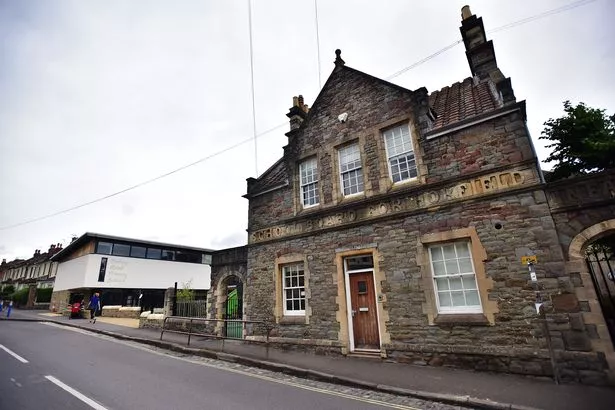 A general view of Bishop Road Primary School in Bishopston
A general view of Bishop Road Primary School in Bishopston
This large area which stretches from the Downs to Muller Road is home to five primary schools. One of them, Bishop Road, is a four-form-entry and the rest are two-form-entry schools.
The council strategy warns that by 2030, there will be a surplus of 45 places, but Bishop Road is already planning to reduce its intake from 120 new pupils every September to 90 – and go from a four-form-entry to a three-form-entry next September, 2026.
The council strategy is to encourage one of the other currently two-form-entry primary schools to reduce down to one.
Central, Clifton, Hotwells and Harbourside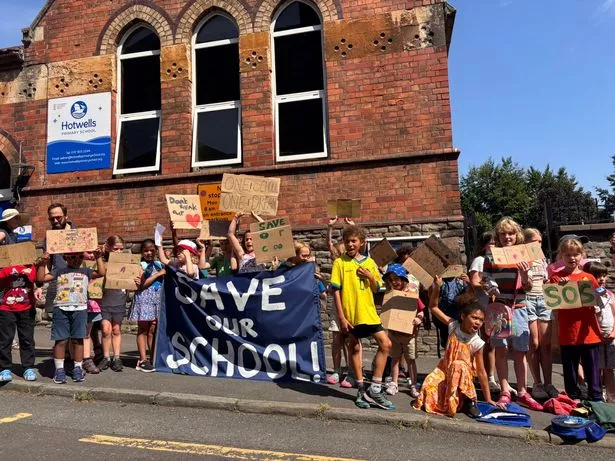 A protest outside Hotwells Primary School on Monday, June 23, 2025, against its closure and takeover by Cathedral Primary School(Image: National Secular Society)
A protest outside Hotwells Primary School on Monday, June 23, 2025, against its closure and takeover by Cathedral Primary School(Image: National Secular Society)
The city centre area which stretches along the harbourside to Hotwells and up to Clifton Down, is already at the heart of the controversy over the impact of school closures and falling rolls.
There are six schools in the area, none of which are bigger than a 2.5FE, and the council is advocating that at least one of the schools in the area will have to reduce its number of reception classes.
The council said that, even though there will be a total of 1,528 new homes built in this area between 2023 and 2028, a staggering 98 per cent of them will be smaller flats, which would only produce an extra 163 children over a five-year-period.
Controversially, The Cathedral Trust, which runs the Cathedral Primary and Hotwells Primary, is proposing to close Hotwells and effectively merge the two schools, with Hotwells acting as an infants site for the larger school.
This, the council strategy states, would ‘result in a PAN reduction’, which would cover the surplus across the area.
Henbury, Brentry and Southmead
There are six schools in this area of North Bristol, which stretches from the M5 to the site of the proposed YTL Arena, and down through Southmead. The council strategy states that it is proposed to reduce the number of Reception class places by 45 – or one and half forms.
At present, the E-ACT Badocks Wood academy on the edge of Southmead has a PAN of 45, while three other schools – Blaise, Henbury Court and Little Mead – are two-form entries.
Stoke Bishop, Westbury on Trym and Henleaze
There are seven schools in this large area of north west Bristol, which stretches from Durdham Down up to Blaise Castle. Only one is a small school – Sea Mills – and two of them are large, with three-form-entry set-ups at St Ursula’s and Elmlea Infants, according to the council’s strategy.
The over-supply of primary school places in this area is not as severe as other areas, and only one reception class will be needed to be cut, according to the council.
Horfield and Lockleaze Glenfrome Primary School (Eastville) – Bristol International Balloon Fiesta Schools Tether Roadshow 2025(Image: AMBITIOUS)
Glenfrome Primary School (Eastville) – Bristol International Balloon Fiesta Schools Tether Roadshow 2025(Image: AMBITIOUS)
In this area either side of the Bristol-Gloucester railway line in north Bristol, there are six primary schools, and half of them are small, with just a one-form-entry set up.
Lockleaze is seeing rapid housebuilding at the moment, with more than 900 new homes predicted across the area by 2028, and more than half of those will be houses.
But even so, the council’s calculations are that there will still be an over-supply of primary school places by 2030 – as many as 69. But because of the number of smaller primary schools, the council strategy is to suggest only one of the larger primary schools – Filton Avenue, Glenfrome or Horfield – cut one of their reception classes.
Brislington
There are four primary schools in Brislington, which takes in Broomhill and St Annes too. The council strategy estimates that across all four schools, there will be an over-supply of 35 children, so the recommendation is that no cuts are made.
Bishopsworth, Hartcliffe and Withywood
There are seven primary schools in the south west corner of Bristol, which stretches from Cheddar Grove in Bedminster Down to Four Acres in Withywood. All seven are two-form-entry schools, but the council predicts there will be a surplus of 103 places by 2030, so some of those will have to be cut to be one-form-entry. The council’s calculations are that this is the equivalent of four of the schools, but the strategy suggests that two of them are reduced.
Filwood, Knowle and Windmill Hill
This is a large area of South Bristol that, thanks to the quirks of council ward boundaries, stretches from Victoria Park, Windmill Hill and Bedminster to the A4174 ring road at Knowle West and Filwood. There are ten primary schools which include the three-form-entry Knowle Park and the smaller Christ The King. Seven of the schools are two-form-entry.
There will be a surplus by 2030 of 83 places across this area, but three of the schools have already planned to reduced their number of reception classes from three to two – Oasis Marksbury Road and Parson Street in Bedminster, and Oasis Connaught in Knowle West.
The council said its strategy was to suggest that, by 2030, another primary school does the same.
Bedminster and Southville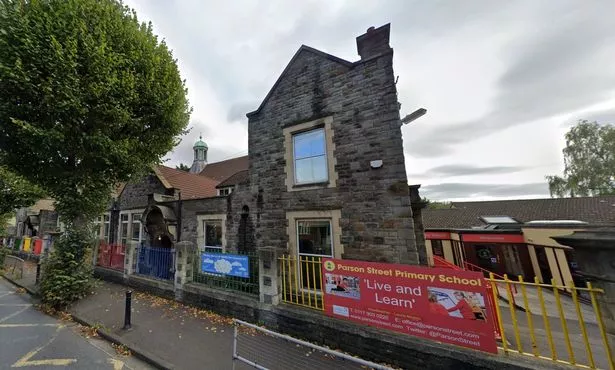 Parson Street Primary School, in Bedminster, no longer ‘Requires Improvement’ after Ofsted judged the school to now be ‘Good’.(Image: Google Maps)
Parson Street Primary School, in Bedminster, no longer ‘Requires Improvement’ after Ofsted judged the school to now be ‘Good’.(Image: Google Maps)
The BS3 area which stretches from Bedminster and Southville to Ashton Gate and Ashton Vale – some of the biggest schools are based here. This area is also seeing some of the fastest growth in house-building in the city, with a total of 1,559 new homes projected by 2028. But 96 per cent of those will be flats, meaning that even with the developments all over BS3, there will still be an over-supply of primary school places by 2030.
The area has six primary schools, dominated by the four-form-entry Ashton Gate primary school, and the three-form-entry Southville Primary School. The other four primary schools – Ashton Vale, and Holy Cross, Luckwell and Compass Point in Bedminster – are all smaller, one-form-entry schools. The council strategy is that one of the two bigger schools cut one reception class.
Hengrove, Whitchurch and Stockwood
There are nine primary schools in this area, which stretches from Hengrove Park to Stockwood, with Hengrove and Whitchurch in between, and four of them are smaller schools. The council predicts one of the biggest surpluses by 2030 – with 110 empty seats across those schools.
The suggestion is that the two of the schools cut their reception classes, which council policy suggests should be two of the larger primary schools.
But local councillors have launched a ‘save our primary schools’ campaign, claiming that the council is eyeing up closing at least one, if not two, of the smaller, one-form-entry primary schools.
 Bristol Live WhatsApp Breaking News and Top Stories
Bristol Live WhatsApp Breaking News and Top Stories
Join Bristol Live’s WhatsApp community for top stories and breaking news sent directly to your phone
Bristol Live is now on WhatsApp and we want you to join our community.
Through the app, we’ll send the latest breaking news, top stories, exclusives and much more straight to your phone.
To join our community you need to already have WhatsApp. All you need to do is click this link and select ‘Join Community’.
No one will be able to see who is signed up and no one can send messages except the Bristol Live team.
We also treat community members to special offers, promotions and adverts from us and our partners. If you don’t like our community, you can check out at any time you like.
To leave our community, click on the name at the top of your screen and choose ‘Exit group’.
If you’re curious, you can read our Privacy Notice.
Click here to join our WhatsApp community.
